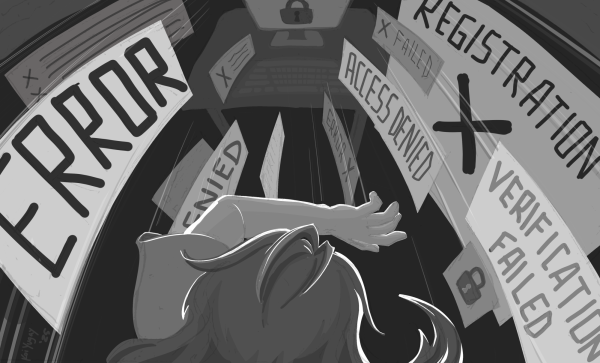Empowered students take stand for education
Students gathered all over campus and joined together as they made their way through the hallways chanting “Don’t just watch us, join us,” in hopes of getting students to walk out of their classes.
Waves of protests spread across the globe over the last year from Egypt to Greece, demonstrating the strength of the human spirit. Refusing to be outdone, the U.S. began participating in this new-age movement of empowering the common man and fighting for social justice through Occupy Wall Street.
Most recently, a new movement, Occupy Community Colleges, branched off of this upheaval.
While many students have sat by and watched budgetary issues increase, Occupy EC hasn’t just watched.
They’ve taken things farther with a walkout last thursday and it was time for that.
We should not underestimate the power of these “Occupy” grassroots movements.
Our youth could channel their anger into a potent political force.
Like Hosni Mubarak, the elites run the risk of underestimating the power of a large number of unemployed and underemployed educated young citizens armed with social media weapons to inflict significant damage.
This occupy movement could be 2012’s answer to the Tea Party revolution of 2010.
The Ocupy EC walkout showed support for the “Occupy” movement’s principal criticism that budget cuts nation-wide have thrown the state of education into a crisis.
Students will no longer stand for the increasing level of debt they are accruing from college loans and poor job prospects.
Students from low-income families, students from the upper class and college professors aiming to focus the movement in an effective direction are participating in this organization. These forces are gathering together to protest the 9.1-percent unemployment rate for 2010 college graduates, which is among the highest levels in history.
According to The Project on Student Debt, a research and policy nonprofit organization, claims that class of 2010 students graduated with an average of $25,250 in debt, a 5-percent increase from 2009.
That’s no surprise given that billions have been cut from higher education over the past three years, leading to wait lists for classes that are thousands of students long, particularly in California.
Also according to research, approximately 150,000 California students were turned away from community colleges last year because of cuts.
With a state unemployment rate of 12.1 percent—the second-highest in the nation—and employers adding a mere 11,000 net jobs this year, California students in particular are feeling the jobless pinch.
So it’s not surprising that more than 20 percent of the colleges participating in occupy colleges are in the Golden State.
Many students are angry that their money and prosperity are largely affected by decisions or lack of decisions made under EC’s administration.
Wouldn’t you be angry if you were graduating in the fall of 2012 with more than $30,000 in debt and fearing that you may not be able to find a job?
These student protests are a call for help from our leaders. Will our leaders hear them, understand them and help them?
The EC students involved are willing to do anything to make a difference.
Yes, a campus walkout and an urban tent in front of the Schauerman Library may seem crazy.
Another way of making a difference would be to write a letter to the board of trustees letting them know how much it has affected students as a whole.
Regardless of method, however, the importance of this movement is the solidarity shared between colleges.
Across the country, students are rising up together to fight for a cause they believe in and they want their voices to be heard, so we must support their struggle.
It’s their goal to go straight to the top and focus on our lawmakers. The only way students will see reductions in fees among other things is to take stand.








